Honda and Piper Aircraft to Form New Business Alliance
 ANN has confirmed what
the rumors have been telling us for several days... that Honda was
going to announce a committment to produce the HondaJet and that a
major deal was in the works for Piper Aircraft. The rumors were
right.
ANN has confirmed what
the rumors have been telling us for several days... that Honda was
going to announce a committment to produce the HondaJet and that a
major deal was in the works for Piper Aircraft. The rumors were
right.
Not only has Honda committed to production of the innovative
Honda TwinJet, but Piper has been named a a partner in a venture
that will, in part, result in the production of that aircraft in
the United States.
Honda confirmed their plans to enter the innovative
HondaJet in the growing very light jet market, with
the process of accepting sales orders expected to begin in the
U.S. in fall 2006. Toward this goal, Honda will establish a new
U.S. company to hold FAA type certification and production
certification. Honda's goal is to complete type
certification in about 3-4 years, followed by the start of
production in the U.S.
Making the announcement at the EAA AirVenture 2006, the
world's largest annual aviation gathering, Honda also revealed
plans to form a business alliance with Piper Aircraft, Inc. to
collaborate on sales and service, and to explore opportunities in
engineering and other areas within general and business
aviation.
Honda and Piper will provide a new level of sales and service to
meet the needs of jet customers with the goal of setting a higher
standard for the quality of the ownership experience. No specific
details regarding additional collaboration were announced.
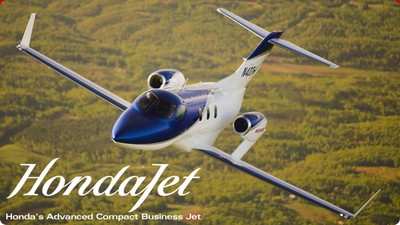
"Aviation has been an important dream of Honda for more than
four decades," said Satoshi Toshida, senior managing director of
Honda Motor Co., Ltd. "Our goal is consistent with the philosophy
of other Honda products -- to provide convenient and efficient
transportation that will make people's lives better. We are excited
now to enter a new dimension of mobility."
"In Piper we believe we have a partner we can collaborate with
in our effort to bring new value to customers in the very light jet
market," said Toshida.
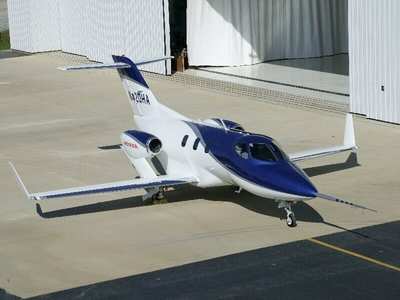
"Honda is a company with a rich heritage of bringing high
quality, innovative products to market," said James K. Bass,
president and CEO of Piper Aircraft, Inc. "This business alliance
is a perfect fit given the commitment both Piper and Honda have to
providing our respective customers with world class products and
services. Piper is very excited about this alliance and the way it
complements our vision for the future."
HondaJet features several innovations that help it achieve far
better fuel efficiency, larger cabin and luggage space and higher
cruise speed than conventional aircraft in its class. The
announcement to commercialize HondaJet comes one year after the
plane made its world public debut at EAA AirVenture 2005 in
Oshkosh, Wis.
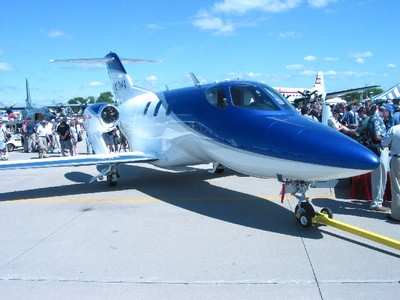
The result of 20 years of aviation research, key HondaJet
innovations include a patented over-the-wing engine-mount
configuration, a natural-laminar flow (NLF) wing and fuselage nose,
and an advanced all-composite fuselage structure.
"We want to create new value within the aviation market through
the unique new design of HondaJet," said Michimasa Fujino, HondaJet
project leader and vice president of Honda R&D Americas, Inc.
"Our goal is to deliver three key attributes -- performance,
quality and comfort -- beyond what people currently expect from
light business jets."
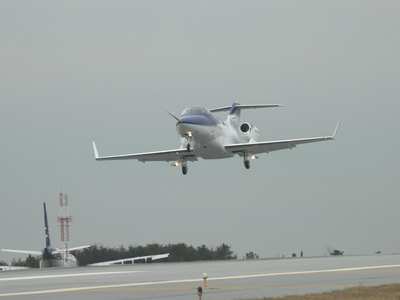
HondaJet's NLF wing and NLF fuselage nose were developed through
extensive analyses and wind-tunnel testing. These designs help
HondaJet achieve low drag. HondaJet's patented over-the-wing
engine-mount configuration helps eliminate the need for a structure
to mount the engines to the rear fuselage, maximizing space in the
fuselage for passengers and luggage. Further, by determining the
optimal position for the engines, the over-the-wing mount actually
reduces drag at high speed to improve fuel efficiency.
The advanced all-composite fuselage structure consists of a
combination of honeycomb sandwich structure and co-cured stiffened
panels. It was developed to reduce weight and manufacturing costs.
This aircraft is also outfitted with a state-of-the-art all-glass
flight deck with an integrated avionics system that displays all
information digitally on a high resolution flat display, and also
has an autopilot function.
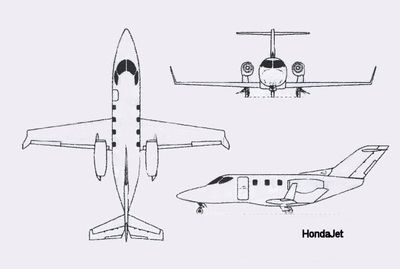
To date the prototype six-to-seven seat HondaJet has completed
more than 240 hours of flight-testing since December 2003. So far,
the prototype HondaJet has achieved an altitude of 43,000 feet and
a speed of 412 knots and is on course to meet or exceed all of its
design specifications.
 ANN's Daily Aero-Term (05.07.25): Terminal Radar Service Area
ANN's Daily Aero-Term (05.07.25): Terminal Radar Service Area ANN's Daily Aero-Linx (05.07.25)
ANN's Daily Aero-Linx (05.07.25) Classic Aero-TV: Anousheh Ansari -- The Woman Behind The Prize
Classic Aero-TV: Anousheh Ansari -- The Woman Behind The Prize NTSB Prelim: Bell 206B
NTSB Prelim: Bell 206B Airborne-NextGen 05.06.25: AF Uncrewed Fighters, Drones v Planes, Joby Crew Test
Airborne-NextGen 05.06.25: AF Uncrewed Fighters, Drones v Planes, Joby Crew Test








